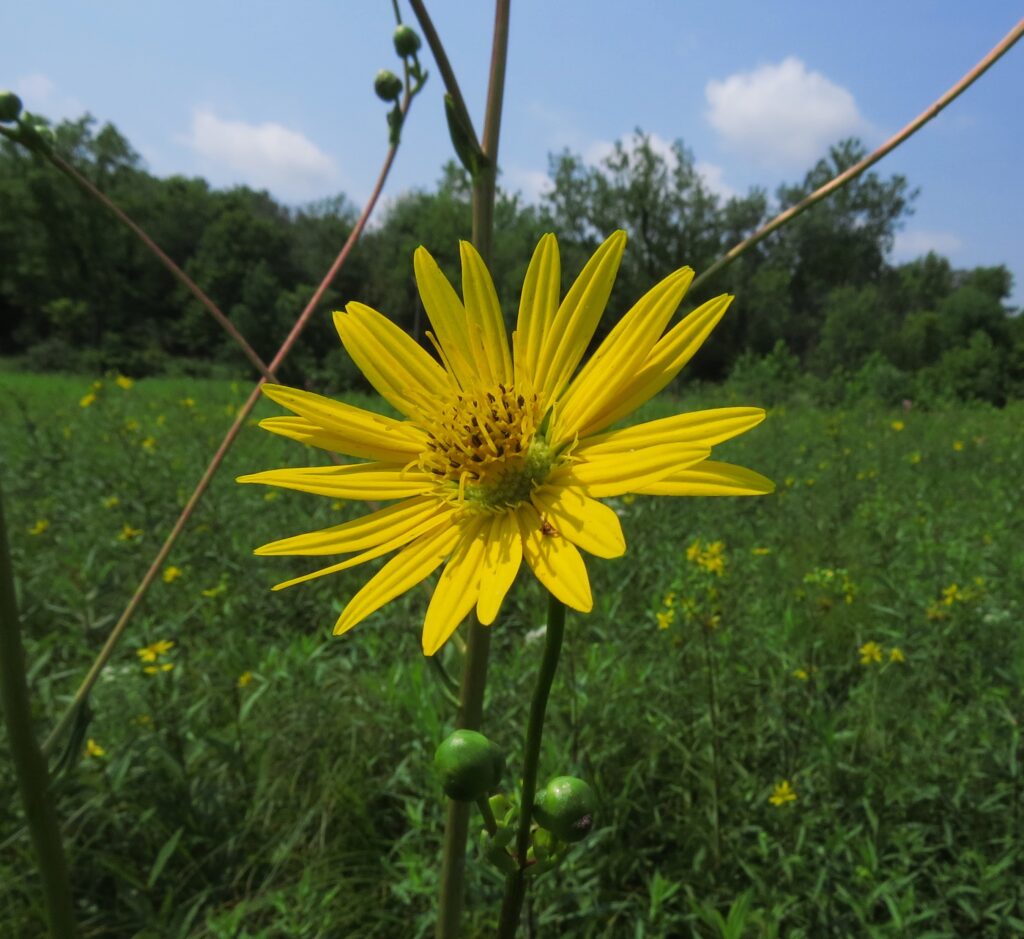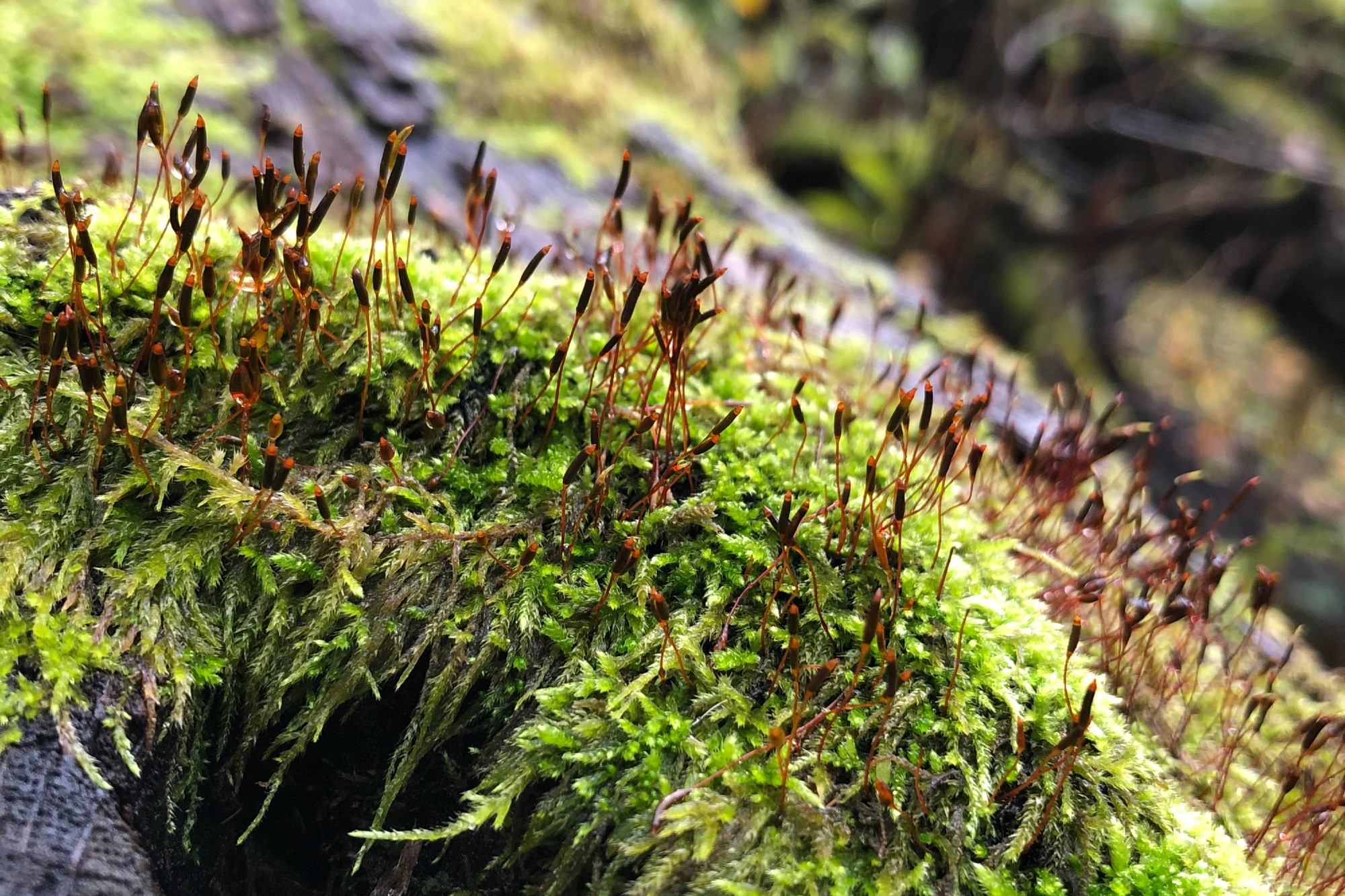Prairies and grasslands are one of, if not the most overlooked and forgotten habitats in North America.
It’s easy to notice a forest of towering trees, or a wetland with its pooled water, cattails, and cacophony of frogs in the spring. It is very easy to miss what appears to be a field of grass for ~75% of the year. Despite their sometimes rather drab looks, grasslands and prairies are one of the most important and biodiverse ecosystems on the planet, and one of Indiana’s most endangered.
Prairies once stretched across nearly the entire center third of the North American continent, including western Indiana. It was the largest contiguous ecosystem on the continent. Even here, in east-central Indiana, there were once sizable pockets of prairie scattered across the landscape. Considering the historical size and scope of North American prairies, it makes sense that they are one of the world’s most biodiverse ecosystems, second only to the Amazon Rainforest! What looks like just a field is actually home to hundreds of species of grasses and wildflowers. These grasses and wildflowers (also known as forbs) in turn support thousands of species of insects, including our beloved and imperiled pollinators.
Large, unbroken prairies provide food and shelter for grassland dependent birds such as federally threatened bobwhite quail and endangered greater prairie chickens. Bobwhite quail depend on grasslands that span at least 20 acres to have a suitable habitat that they can survive the winter in. While this may not seem like much, for comparison, Red-tail Land Conservancy’s largest prairie is Red-tail Nature Preserve, and it’s only around 10 acres.
Further complicating the issue, greater prairie chickens require around one square mile, or 640 acres, of contiguous prairie to sustain a breeding population. While never common in this part of the state, greater prairie chickens once thrived in the hundreds of thousands in the Great Prairie of northwest Indiana. By 1973, they were all gone. They remain extirpated from the state today. How did this happen?
Over the past century the vast majority of Indiana’s prairies were lost to agriculture and development. Today, less than 1% of the original prairie remains. Most of the remnant prairie patches left in Indiana are widely dispersed and exist in one to two acre pioneer cemeteries or railroad right-of-ways. This is why prairie is one of Indiana’s most endangered habitats.
All is not lost though. Decades worth of efforts by conservation-minded folks have seen thousands of acres of prairie reinstalled across the state, including on property owned and protected by Red-tail Land Conservancy. While these restored prairies may the same biodiversity as remnant prairie, they are nonetheless vital to support healthy populations of our native wildlife and pollinators. With the number of large prairie restorations increasing, it is our hope that populations of grassland-dependent animals like the bobwhite quail and imperiled pollinators like the rusty patched bumblebee will increase with them. In the northwest part of the state, huge prairie restoration projects like Kankakee Sands (managed by The Nature Conservancy) hope to bring about the reintroduction of greater prairie chickens back into the state.
Landowners who wish to help combat prairie habitat loss but don’t have hundreds or even a dozen acres shouldn’t fret. Any prairie restored is a boon to pollinators and wildlife. Even small garden beds of native prairie wildflowers can assist migrating pollinators and birds. If more people were to plant small “pocket prairies” in their yards or prairie strips in their ag fields, they could help create grassland corridors to increase connectivity. Our state’s prairies could go from being a scattering of disjointed prairies to several large prairie complexes connected by corridors. We may not be able to bring back the original prairie, but we owe it to the world’s second-most biodiverse ecosystem to try to save and restore as much as we can.
Photo by Kevin Tungesvick – Prairie dock, a prairie wildflower at Red-tail’s newest preserve, Buck Creek Fen Preserve.
Natalie Grant is the Stewardship Coordinator who focuses on managing nature preserves for Red-tail Land Conservancy. Her passion is caring for the land and working to make it as healthy as it can be through diligent stewardship and lasting protection.




